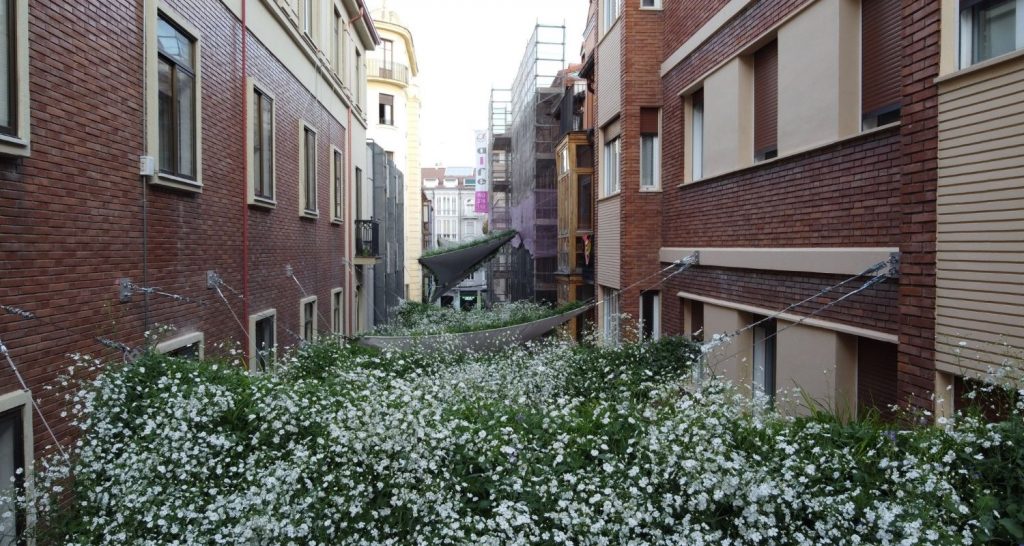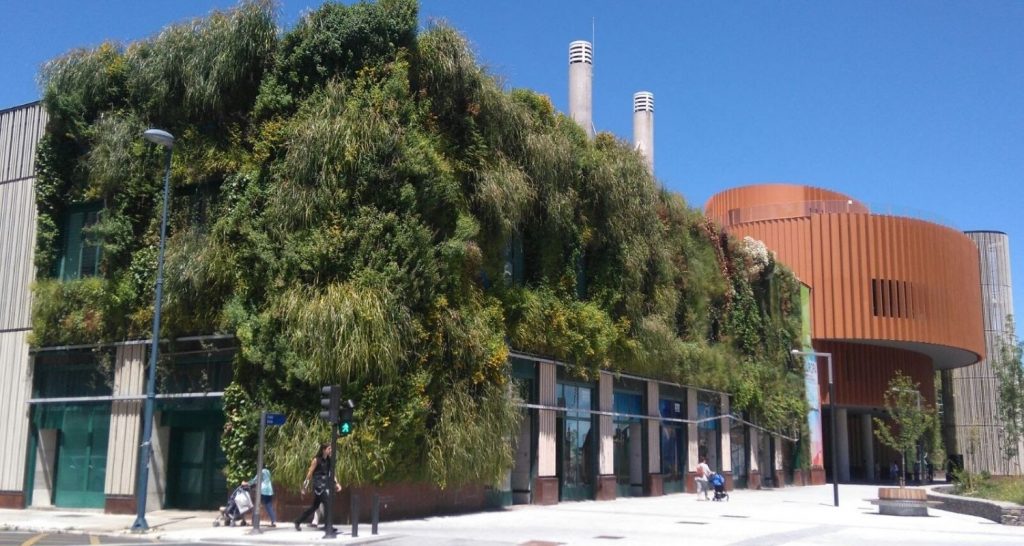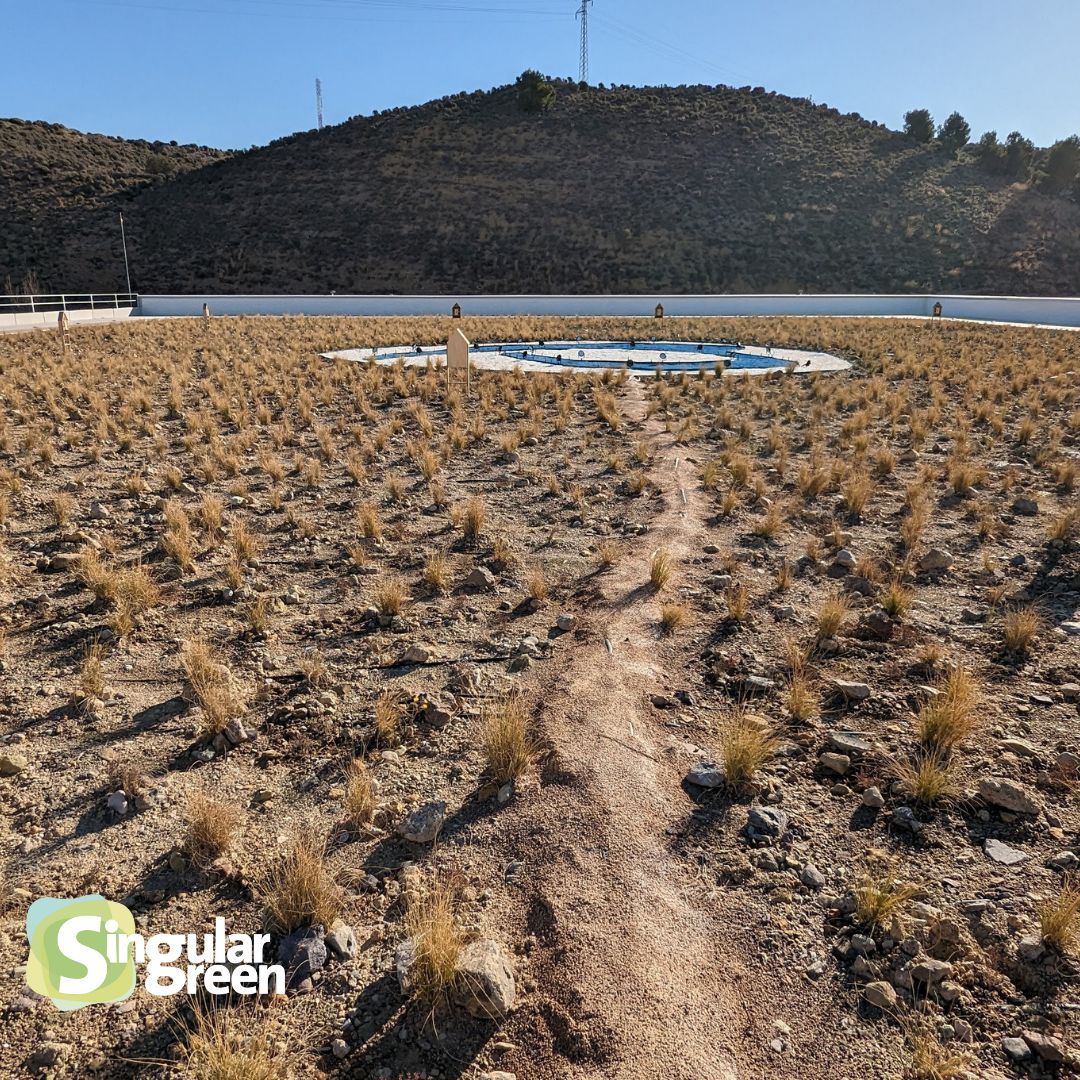After the removal and dismantling of the vertical garden at the “Tabacalera” building in Tarragona, considered the largest vertical garden in Europe until 2020, the largest vertical garden in Spain is located in Vitoria-Gasteiz with almost 1,500 m2 of natural space and was designed by SingularGreen.
The city of Vitoria-Gasteiz is internationally recognized for its biodiversity and the integration of green spaces into the urban fabric. Within the project we designed for an inner green belt, we projected this vegetated façade with the purpose of bringing the ecosystems of Álava to the city center.
A truly sustainable project and vertical garden that promotes biodiversity, reduces pollution and provides thermal and acoustic insulation.

Characteristics of the largest outdoor vertical garden in Spain:
The largest outdoor vertical garden in Spain, located in Vitoria-Gasteiz and designed by SingularGreen, has several notable features:
- Size: The vertical garden covers nearly 1,500 square meters, making it the largest of its kind in Spain.
- Sustainability: The garden is designed to be sustainable, with a focus on promoting biodiversity, reducing pollution, and providing thermal and acoustic insulation.
- Integration with urban environment: The garden was designed as part of a larger project to integrate green spaces into the city’s urban fabric, bringing the ecosystems of Álava into the city center.
- Plant selection: The plants selected for the garden are native to the area, creating a sense of place and reinforcing the local biodiversity.
- Aesthetics: The vertical garden serves as an attractive focal point in the city, bringing a natural element to the built environment and enhancing the overall aesthetic of the area.
The outdoor vertical garden in Vitoria-Gasteiz, the largest of its kind in Spain, has a total surface area of 1,492 square meters, with 1,000 square meters being a hydroponic f+p vertical garden and 492 square meters covered by climbing plants on the windows. Over 33,000 plants of various native varieties from the Álava and Basque Country regions were used for its plantation.

The main purpose of the project was to improve the energy consumption of the Palacio de Congresos, with the proposed vertical garden system, “F+P Preplant,” adding a thermal resistance of 2,644 m2.K/W, which provides 270% more insulation than the existing facade, resulting in energy savings.
Plants used in the outdoor vertical garden in Vitoria
The design incorporated 97% native plant species, including many that are endemic to the Álava region, making it the first vertical garden to reproduce local ecosystems of its location. One of the main challenges of the project was to use native plants, as many of the plants in the Vitoria environment are adapted to the dry periods of the plateau climate and have difficulty surviving in more humid environments like conventional vertical gardening systems.
At the base of the vertical garden, there is a backlit Corten steel base that provides an explanation of the ecosystems that the vertical garden replicates, as well as the plant species it contains.
The hydroponic system used to maintain this garden provides optimal conditions for nutrients, pH, conductivity, and moisture conditions for this type of vegetation; the entire system is monitored by a computer to ensure proper operation.

Starting the tour of the vertical garden from left to right, we first encounter the Vertical Wetland. The vegetal facade reproduces the formal pattern of the Salburua wetlands (a wetland area in the vicinity of the city of Vitoria-Gasteiz).
The species used are typical of the wetlands in the area:
- Scirpoides holoschoenus,
- Cyperus longus,
- Carex mairii,
- Juncus maritimus,
- Juncus acutus,
- Cirsium monspessulanun,
- Tetragonolobus maritimus,
- Lysimachia ephemerum…
In the center of the façade, the aluminum profiles reproduce the structure of the plots in the fields of Álava. Within this space, we have designated an area for a Vertical Garden where seasonal vegetable species are planted. Currently, in the winter season, the garden has Watercress and Lettuces planted.
En la northern parte of the façade, the profile structure becomes more organic and is structured around a river, forming the Vertical Forest.
This is the area that reproduces the ecosystems of the hills and mountains of Vitoria. Some of the species used include:
- Ribes alpinum,
- Sorbus aria,
- Crataegus monogyna,
- Prunus spinosa
- Erica vagans,
- Genista occidentalis,
- Globularia nudicaulis,
- Teucrium pyrenaicum,
- Bromus erectus,
- Carex humilis…
Two species of trees have also been planted.
- Hayas Fagus sylvatica and tejos Taxus baccata.
Design of the largest vertical garden in Spain
The design of the largest vertical garden in Spain takes as reference the ecosystems surrounding Vitoria-Gasteiz and replicates them along the facade.
From left to right, the vegetation of the Salburua wetlands, the agricultural plots of the Álava countryside, the ecosystems of the margoso hills, and the beech forests of the Vitoria mountains are represented.



The large windows will be covered by deciduous vines that allow the passage of sunlight in winter and protect the building from heat in summer, creating a biologically eco-efficient building.
The river profile, which structures the design of the vertical forest, is illuminated at night with low-energy LEDs, creating an unparalleled environment for strolling in the center of Vitoria-Gasteiz.
The corten steel base not only provides didactic information about the garden and the city’s ecosystems, but also becomes a space for rest and conversation, a bench within a vertical park.
We were amazed at how quickly nature made its way in the vertical garden.
Thanks to the native plants, the garden has been colonized by all kinds of insects and animals, and birds have not been long in appearing.
Here’s an image of a magpie searching for food.

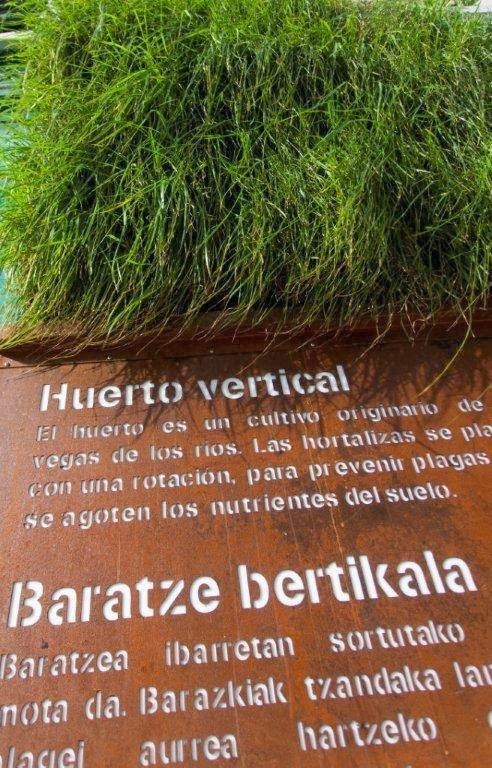


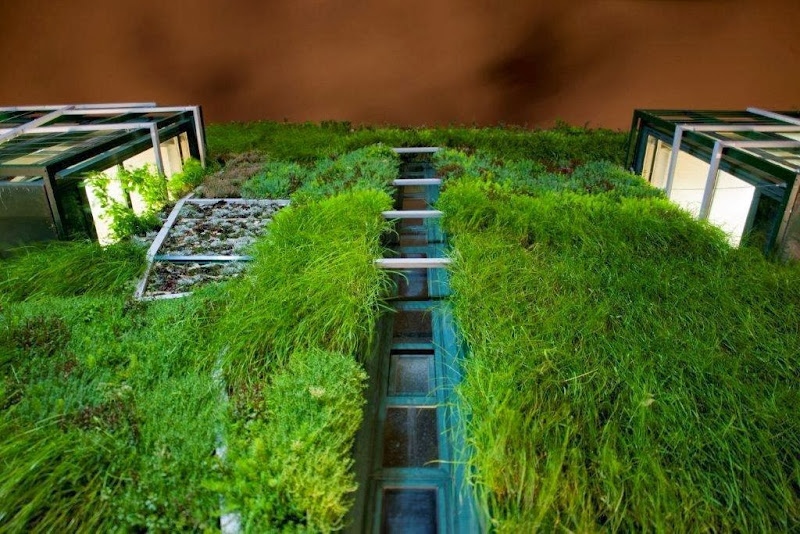
Fotografías por:
Quintas Fotógrafos
Jordi Serramia Ruiz
Hugo Riquelme Ortega


